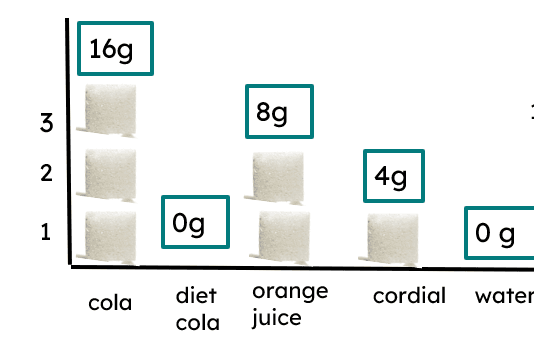Myths about teaching can hold you back
- Year 4
Comparing toothpaste (non-statutory)
I can describe the function of toothpaste and compare different ingredients used to make it.
- Year 4
Comparing toothpaste (non-statutory)
I can describe the function of toothpaste and compare different ingredients used to make it.
These resources will be removed by end of Summer Term 2025.
Switch to our new teaching resources now - designed by teachers and leading subject experts, and tested in classrooms.
These resources were created for remote use during the pandemic and are not designed for classroom teaching.
Lesson details
Key learning points
- Toothpaste is a key part of your daily hygiene routine. It helps to remove food and plaque from your teeth and gums.
- Different diets and lifestyle choices, like eating sugary foods and smoking, can affect tooth health.
- Scientists from the past developed toothbrushes and toothpaste to help reduce tooth decay.
- Different toothpaste contains different ingredients to support healthy teeth and gums.
- Scientists test different ingredients in toothpaste to compare how effective they are.
Keywords
Function - The task that something has is its function.
Toothpaste - Toothpaste is a thick, soft, moist substance used on a brush for cleaning one's teeth.
Plaque - Plaque is a sticky substance that forms a coating on your teeth and gums.
Abrasive - Abrasive materials have a rough surface, they are often used for polishing or grinding other materials.
Ingredient - An ingredient is one of the parts in a mixture.
Common misconception
Children may believe all toothpastes are the same.
By investigating the effectiveness of a variety of toothpastes, children will realise there are a range of different toothpastes for different jobs.
To help you plan your year 4 science lesson on: Comparing toothpaste (non-statutory), download all teaching resources for free and adapt to suit your pupils' needs...
To help you plan your year 4 science lesson on: Comparing toothpaste (non-statutory), download all teaching resources for free and adapt to suit your pupils' needs.
The starter quiz will activate and check your pupils' prior knowledge, with versions available both with and without answers in PDF format.
We use learning cycles to break down learning into key concepts or ideas linked to the learning outcome. Each learning cycle features explanations with checks for understanding and practice tasks with feedback. All of this is found in our slide decks, ready for you to download and edit. The practice tasks are also available as printable worksheets and some lessons have additional materials with extra material you might need for teaching the lesson.
The assessment exit quiz will test your pupils' understanding of the key learning points.
Our video is a tool for planning, showing how other teachers might teach the lesson, offering helpful tips, modelled explanations and inspiration for your own delivery in the classroom. Plus, you can set it as homework or revision for pupils and keep their learning on track by sharing an online pupil version of this lesson.
Explore more key stage 2 science lessons from the Introduction to the human digestive system unit, dive into the full primary science curriculum, or learn more about lesson planning.

Equipment
See additional materials for guidance
Content guidance
- Depiction or discussion of sensitive content
- Risk assessment required - equipment
Supervision
Adult supervision required
Licence
Prior knowledge starter quiz
6 Questions
Q1.Which of these things help to keep your teeth and gums healthy?
Q2.To keep your teeth and gums healthy, you need to brush your teeth at least a day.
Q3.What name is given to the sticky substance that forms a coating on your teeth and gums.
Q4.What is the surface of the tooth called that can be damaged by the sugary food we eat?
Q5.What can happen to your teeth if you consume too many sugary foods and drinks?
Q6.What does this graph about sugar in drinks show?



